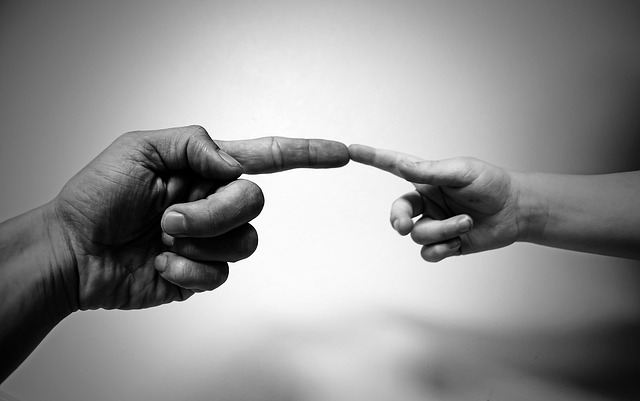Sign language: how to communicate with your child before they start talking
You don’t have to wait until your child starts talking to communicate with them fully. Children begin to understand adult speech long before they say their first words. In addition, they love to imitate and enjoy repeating different signs. Therefore, sign language can become the first means of communication with your child, taking your communication to a new level. How do you use sign language correctly and where do you start?

Table of Contents
The Basics of sign language for Children
Children typically start saying their first conscious and understandable words at around one year of age. However, their active vocabulary is still quite limited. They understand many terms from adult speech, but they cannot yet respond or tell a story. The baby gets upset that they are not understood and most of their requests are expressed through crying.
American scientists (including Joseph Garcia) observed the speech development of children born to deaf parents. Surprisingly, they began to speak earlier than children born to hearing parents. This was due to communication in sign language, which improves children’s communication skills and instills confidence in them. It’s so nice to know that your parents understand you!
To teach your child communication using signs and gestures, you need to be patient. The younger the child, the longer they will remember a particular sign and repeat it significantly later. The ideal age to start learning is 4-5 months. During this time, children begin to pay attention to signs and start to perceive them. They will be able to repeat most signs starting from 7-8 months, as their coordination and movement develop.
What rules should be followed when communicating with a baby using gestures:
- Turn learning into a fun activity for all participants. If mom or dad treats it like studying and imposes it on the baby, they will soon refuse such communication. It must always be done in the format of a game.
- Don’t forget about words. The main goal of communication through signs is not to replace speech, but to help the child convey something important to their loved ones before they learn to talk. Therefore, every gesture should always be accompanied by a corresponding word. This is how the baby will expand their passive vocabulary, which they will need very soon.
- Use only simple gestures. There is no need to invent and show too complicated combinations. Only those that the child can repeat and remember.
- The fewer, the better. For the first time, it is enough to introduce 5-8 gestures into communication with the child. After their consolidation and active use, you can gradually expand the “vocabulary.”
- Praise the baby for their successes. This is perhaps the most important rule. Positive reinforcement will instill confidence in the child and give them real pleasure from communication.
Most parents who use sign language with their children recommend starting with demonstrating pleasant and familiar actions or objects. For example, this could be a sign for “more!” The easiest way to show it is by raising the index finger upward. This will mean repeating something again – another cookie, another story, another game of “peek-a-boo.”
Advantages of using gestures for communication
Many parents are afraid that if they teach their children to communicate with signs, they will later become lazy and won’t start talking. After all, they are already understood, why bother talking?! This is not true. On the contrary, children who have mastered sign language transition to verbal communication faster. Sign language serves as a transitional stage – it can be compared to crawling before the baby starts walking.
If you teach your child to indicate with gestures that they want to eat and drink, you can avoid the unhappy “hungry” cry. The sign for “eat” – the fingers of one hand are brought together in a “pinch” and brought to the mouth. The sign for “drink” – the fingers are folded into a fist, the thumb is pointing upwards and indicating the mouth.
The main advantage of gestural communication is the possibility for the child to show what they want. This gives them confidence and reduces the dissatisfaction that arises in situations of misunderstanding. But there are other advantages of such communication:
- early dialogue – the child can “answer” questions from adults with signs;
- development of fine motor skills and finger coordination;
- closer bond with parents – understanding each other leads to a desire to communicate more;
- memory development – the child remembers not only words but also gesture associations with them.
The most important thing for parents is the ability to find out and understand what their child is thinking about, what they want to talk about. It will only take a little time, and they will start indicating with gestures what is important to them but goes unnoticed by adults, such as a dog they saw on a walk or a beautiful flower “hidden” in the bushes.
How to start communicating with signs correctly
The key to success is patience and the absence of irritation. No child can immediately repeat an adult’s gesture and associate it with the necessary action or object. Therefore, moms and dads need to be patient. At first, it may seem like the child is not reacting to the signs, not remembering them, and not understanding how to use them. But after a while, they will definitely start gesturing.
To make learning successful, you need to act step by step:
- Choose the very first gesture you want to teach your child. It should denote familiar objects or familiar actions – book, ball, eat, drink, sleep, bathe.
- Capture the attention of your baby. Choose a moment when they are fed, alert, and ready to communicate. Catch your child’s gaze and show them the chosen object or depict the action.
- Voice the word and show the sign that corresponds to it. Do this every time the baby sees the object or performs the chosen action.
- Repeat these steps until the child begins to use the shown gesture.
Let’s look at the order of actions using the example of a flower. The first time, you can depict it on a walk. Take the flower, let your child smell it, and smell it yourself. Then connect your fingers in a “pinch” and bring them to your nose, pretending to inhale the floral scent. At the same time, say the word “flower.” Repeat this every time you see real or drawn flowers.
Depending on the child’s age and their interest in a particular object/action, they may remember and repeat the shown gesture in a few days or weeks. If you consistently teach them various signs, soon their “vocabulary” will expand, and gestures will begin to form phrases. Thus, many babies can show signs that a plane flew in the sky or a cat is sitting behind the fence.
An approximate list of signs that are suitable for starting learning.
In his system of teaching children sign language, Joseph Garcia suggests using the official sign language used in America for communicating with the deaf and mute. However, other scientists, Susan Goodwin, and Linda Acredolo, recommend that parents come up with their own signs to facilitate communication and understanding with their child. You can start learning sign language with the simple signs below:
- “sleep” – put your palms together under your cheek and tilt your head to the side;
- “read/book” – open your palms to show how a book opens;
- “car” – pret壯陽藥
end to hold a steering wheel and turn it in different directions; - “bird” – wave your hands like wings;
- “ball” – pretend to hold a ball in your hands;
- “swim” – make circular movements on your chest or stomach with your fists clenched;
- “thank you” – you can make an air kiss or put your hand on your chest with a smile.
As your child learns this language, they will want to learn more and more signs. Therefore, be prepared to regularly come up with new signs. Gradually, real words will replace the signs, but many children will continue to use their favorite signs for a long time. This is normal, and over time, the speech will completely replace gesturing.

